How to Share Videos Privately Online With a Secure Platform
Today, providing high-quality video content is vital to your business’s success. This is reflected in the fact that in 2022, 82% of global internet traffic came from video — and this trend is only expected to rise.
However, not every internet user needs to or should have access to all your content. This is especially true if your video files contain sensitive data or privileged information. Ideally, you should protect sensitive information by uploading and sharing your content privately and securely with limited access only available for your intended viewers. You can aid your security and privacy and protect private information in this way by using a professional video content management platform.
In this article, we’ll discuss the importance of private video sharing. Specifically, we’ll discuss how to share videos privately and what to look for in a securevideo content management platform.
Why Use Private Video Sharing?
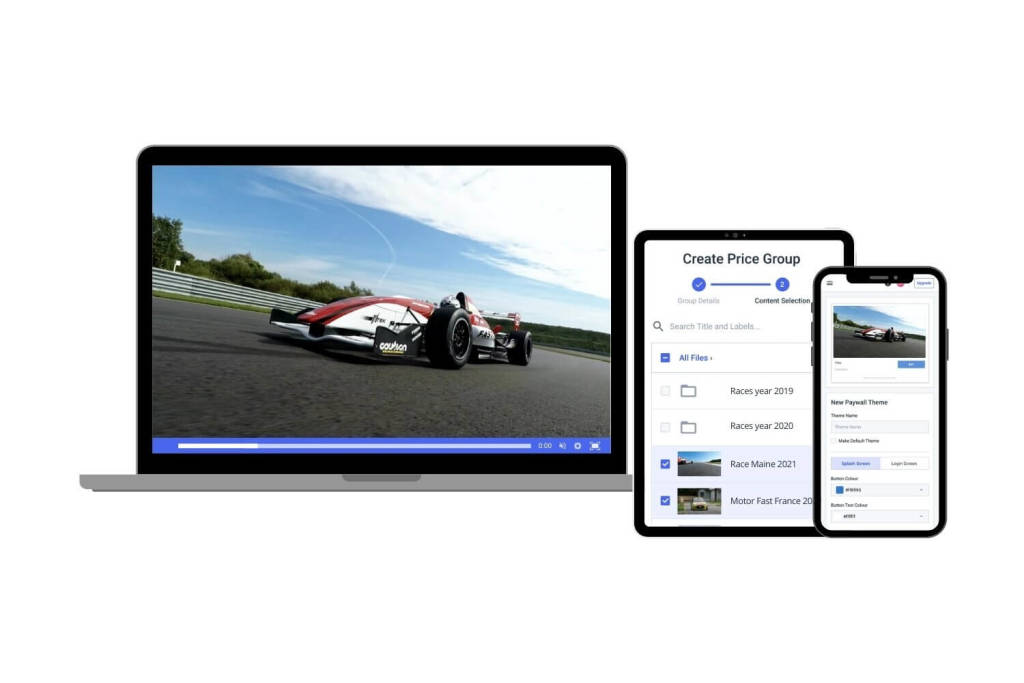
Private video sharing is important if you’re presenting privileged information that could be problematic for your business if the wider world had access to it.
Businesses create video content for a variety of reasons, and not all of the content created is meant to be released to the public.
If you’re creating content that includes sensitive information, is meant to only be seen by your employees, or you want to monetize, having your content widely accessible isn’t a good idea. For these situations, you need to be able to securely upload your content for private hosting and sharing.
Additionally, even the content that you want to be shared with the wider public needs to be shared safely and securely to protect it from falling into the wrong hands.
Your video content is a valuable asset to your business, and protecting it properly with private video hosting is an important investment.
Types of Videos to Share Privately
As you’ve likely gathered, private video sharing is more important for some types of video than others. Some common types of videos to consider protecting include:
- Onboarding videos
- Training videos
- Updates and video announcements
- Walkthrough videos
- Troubleshooting videos
- Livestreams or other recordings of company meetings
- Videos of special company events
- Video content you want to monetize
While this isn’t an exhaustive list, it’s a good start if you’re just setting out to begin sharing your videos online privately.
How to Share Videos Privately Online
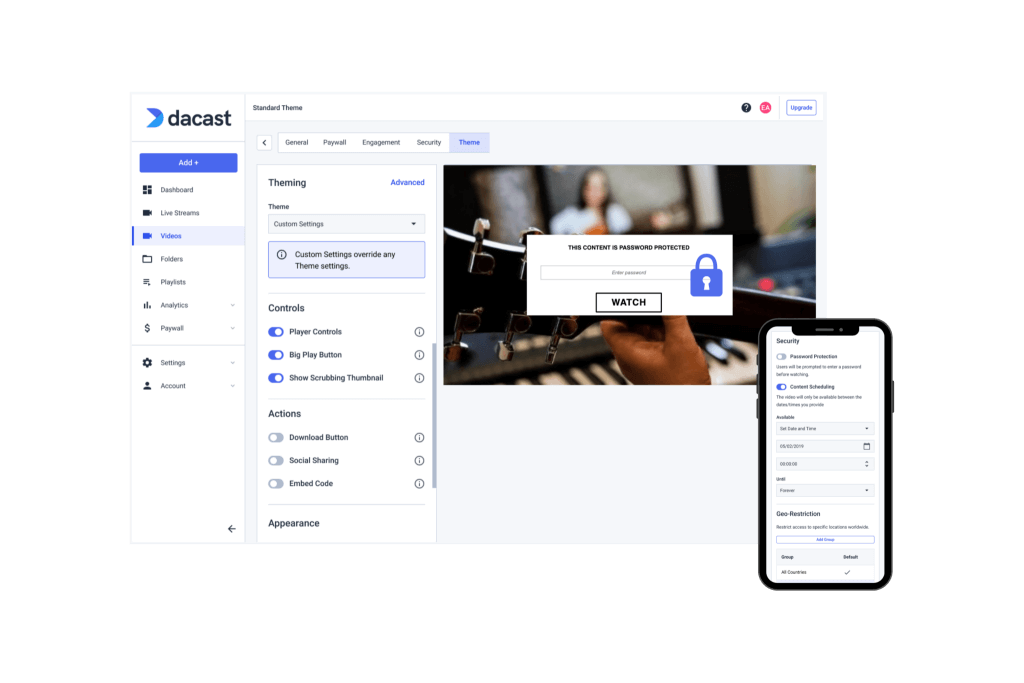
There are a variety of ways to share videos privately, each with its own purpose for your business.
Sharing video online looks a little different for different brands, broadcasters, and creators, and each type of video sharing serves a unique purpose.
If you’re not going to make your video available to the public, you will need to share it securely. There are several methods for sharing videos privately, including:
- Anyone with the link can view
- Anyone with a password can view
- Only people on a specified IP (such as your company’s internal IP) can view
- Only people on a specific IP and with a password can view
- Viewers using a single sign-on to log into a company account can view
The method of sharing video privately that works best for your business will depend on the type of video and who your audience is.
For example, internal training videos that will be consumed only by employees on-site at your offices could be shared with viewers with a specific IP address and a password may be ideal.
With these methods in mind, let’s take a look at five steps you can follow to share videos privately.
1. Determine the Level of Security Required
If you’re sharing an incredibly sensitive video full of privileged information, such as a how-to video on using an internal company system, you obviously want access to be much more limited than if you were just sharing a video of an all-hands meeting full of announcements and accolades.
Some questions to ask yourself to determine what level of security your video may require to include:
- How great of an impact would there be on your business if the video leaked?
- Do you already have a website where you can embed secure videos, or will you also need a secure portal?
- Should viewers be able to easily access and view the videos, or is it all right if they have to enter a password to access them?
- Will your videos need to be viewable from anywhere, or can you restrict them to only be playable from one location?
- Can anyone in your company view the videos, or should they only be accessible by specific teams or people at a specific location?
The more restrictive you need to make access to these videos, the higher the security level your content will need.
2. Choose Your Platform Carefully
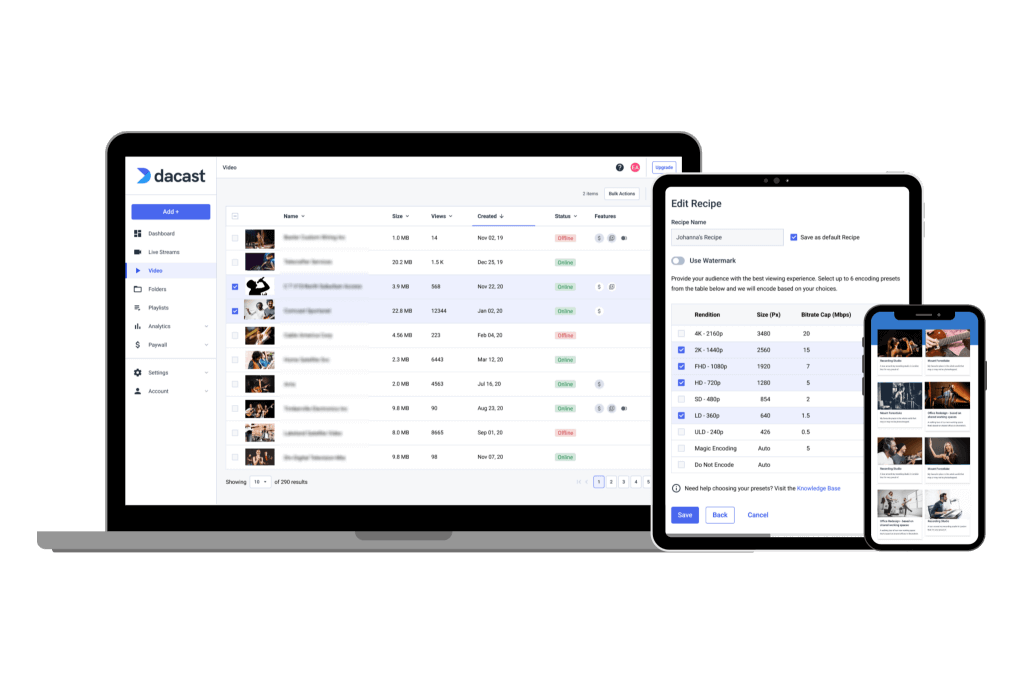
The right private video sharing platform allows you to customize the security level on each of your videos.
Not all video content management systems are meant to share video securely. Some, such as YouTube, are better suited for videos you want to share publicly and don’t need to password-protect or otherwise keep secure.
As you’re looking for a video CMS, it’s important to focus on business- and enterprise-grade platforms that allow more advanced controls over how your videos are stored and shared.
We will discuss the specific features to look for in a video sharing platform a little later on in this post.
3. Plan Ahead
It’s much better to spend some extra time and money upfront to ensure that your video content is stored and shared in a way that is secure rather than accidentally having a sensitive video leaked to the public.
If you plan to utilize your business website for private video sharing, you can create a password-protected page or portal. You must carefully control who can access this page before you add any video content. You don’t want to get everything set up on your website only to have it hacked and your videos get into the wrong hands.
As you develop your private video sharing strategy, think of future goals and endeavors. Make sure that your strategy is scalable to meet your future needs.
4. Protect Embed Codes
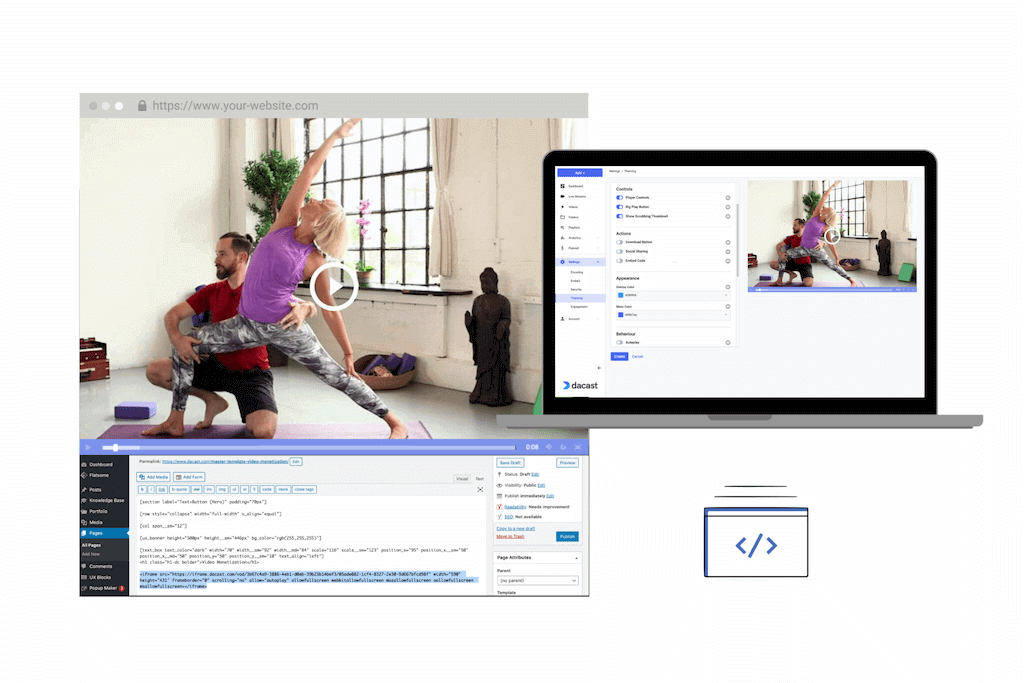
Securing the embed codes you use to share your videos helps them from being viewable by those you don’t want to have access to.
Ensuring that your videos are only accessible on websites you own means you need to protect your live streaming embed codes.
You can do this by either using domain restriction or signed embed codes. That way, you know that if your video does end up on another website, it simply won’t play on a URL you don’t authorize. This feature is available with many private video sharing platforms.
5. Audit Viewer Activity
The final step toward properly securing your video content is to monitor who is accessing your content and how they’re getting to it.
If you’re seeing only users with passwords accessing your content, or only viewers at a specific IP address, then you know your security measures are working correctly.
In the event that you find any abnormalities in your viewer activity audits, you can better correct those problems so you don’t end up with a bigger problem than you already have.
For most businesses, the least labor-intensive and expensive route to choose to upload a video for secure sharing is to find a private streaming platform.
Top Characteristics of a Platform for Private Video Sharing
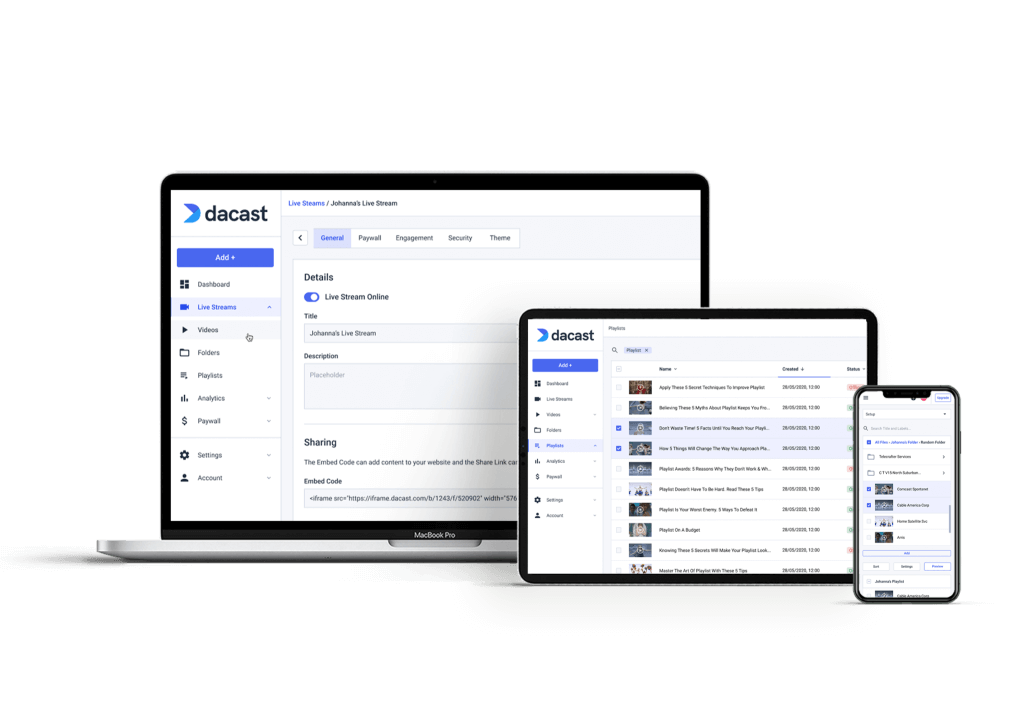
Finding the best way to share videos privately online means finding the right balance of features to protect your videos.
No two video management platforms are the same. Some are free and offer very limited options for secure video sharing. Others are expensive and more complex.
When you’re looking for the best way to share video privately online, there are a few features that are particularly valuable. Let’s review some of the most important characteristics to look for in a private video sharing platform.
Secure Video Hosting
Being able to have control over whether or not your videos are shared publicly or privately is the most basic function to look for in a private video sharing platform.
With the right professional secure video hosting software, you can host and manage your content within one secure platform. The security features built into most professional platforms protect your videos from prying eyes and thieves from the moment they’re uploaded to the viewer, giving you peace of mind that your content is only accessible to the viewers that the video is intended for.
The right platform also keeps your backend portal secure so that your account is not compromised by hackers or people with ill intentions.
Password-Protected Streaming
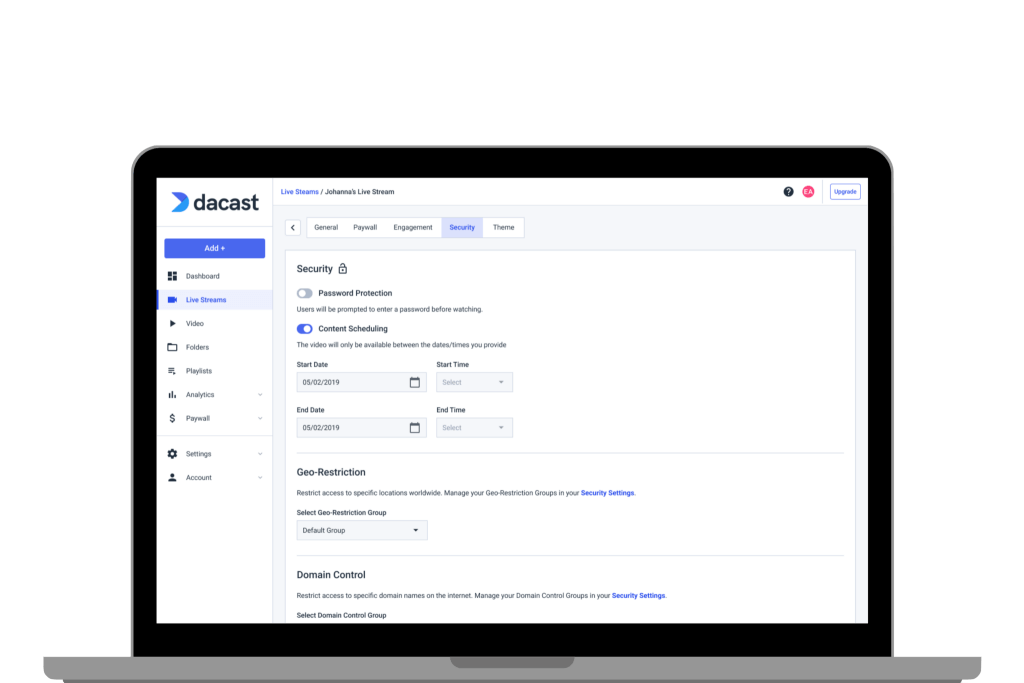
Protecting your videos with a password means only the people you want to view your content will have access to it.
One way to secure your videos is to use password protection.
Whether you want to put passwords on all your videos or just on those that are the most sensitive, the right video management platform allows you to add this level of control quickly and easily.
The beauty of using password protection as a video security measure is that it is easily reversible. If you later decide that your video doesn’t need to be password-protected, you can easily turn the feature off to allow for wider sharing capability.
Geo and Domain Restrictions
Your videos, especially those with very sensitive internal information, don’t need to be accessible in every country unless you have team members all across the globe.
To better protect your content from hackers, you can restrict access to them based on geography or domain.
If, for example, you know that only viewers in the United States and Canada will need to be able to watch your videos, you can block domains from all other countries. This helps protect from someone accessing your videos that are not authorized to see them, adding an extra layer of security.
Dynamic Token Security
Sometimes, password protection and domain restrictions aren’t enough. To add even more security to your video content, Dacast and other platforms utilized tokenized video delivery.
Dynamic token security is an advanced feature that activates when you embed your video on a site or share it. At set intervals — every two minutes for Dacast — the video player calls the server for a new token. This feature helps to ensure that security measures such as domain restrictions and geographic restrictions are checked and cross-checked.
In the event that the tokens fail, the video playback stops.
AES Video Encryption
Another way video CMS platforms protect video content is with the use of Advanced Encryption Standard (AES) encryption
This feature utilizes a special key to scramble the video content. Unless a viewer has the correct access key, they will be unable to watch the video. If an unauthorized viewer attempts to intercept the private video stream, they only see a scrambled mess.
Authorized users, on the other hand, access AES-encrypted video using their web browser and a secure HTTPS streaming connection. There is no interruption to their viewing experience and viewers will not notice the unscrambling of the video.
HTTPS Video Delivery
In recent years, website creators have switched from offering the only HTTP live streaming for the delivery of online content to HTTPS.
With this more restrictive, secure delivery method, the communication protocol is encrypted to help make browsing more secure. This extra authentication protects the data being exchanged between the server and the end-user.
In HTTPS video delivery, that means that your video content is delivered in an encrypted manner to help protect it from unauthorized access.
While HTTPS video delivery alone isn’t considered extremely secure, pairing it with another security measure such as AES encryption or password protection can go a long way toward keeping your video content secure and private.
Secure Paywall with Payments Security

Secure paywalls give your customers confidence that their credit card information won’t be stolen when using your website.
For some of your videos, you may want to protect the monetized video content so you can charge users for its access.
Whether you offer subscription-based access or pay-per-view content, a secure paywall that offers safe payment processing is essential. You want your viewers to be able to trust that their credit card information isn’t going to get stolen when they use your website.
A secure paywall that uses high-end encryption and protection measures increases their confidence in your website and keeps your video monetization efforts protected from prying eyes at the same time.
Final Thoughts
Your private video security measures are vital to your business’s security. This becomes truer the more video content you share.
Solid security practices sharing video content on any video sharing site is essential to the integrity and security of your business as a whole. To protect your video content without any large investment, a professional, private video sharing platform such as Dacast can help.
Dacast is a professional-grade platform with all the features necessary. With Dacast, you can restrict domains, password-protect your content, offer secure paywalls and much more. Furthermore, Dacast offers exceptional 24-7 customer service support. From secure video uploads and reliable top-tier CDN content delivery, Dacast has you covered. And you can try this all for yourself, risk-free, for 14 full days.
Try free today
Any questions? Let us know by leaving a comment below. We have experience with most kinds of video hosting and streaming platforms, so we can probably help no matter what issues you’re experiencing. For exclusive offers and regular live streaming tips, join our LinkedIn group.
 Stream
Stream Connect
Connect Manage
Manage Measure
Measure Events
Events Business
Business Organizations
Organizations Entertainment and Media
Entertainment and Media API
API Tools
Tools Learning Center
Learning Center Support
Support Support Articles
Support Articles